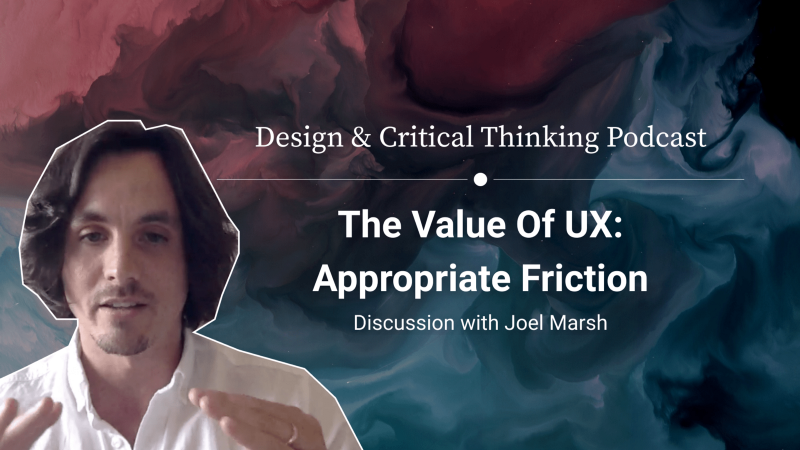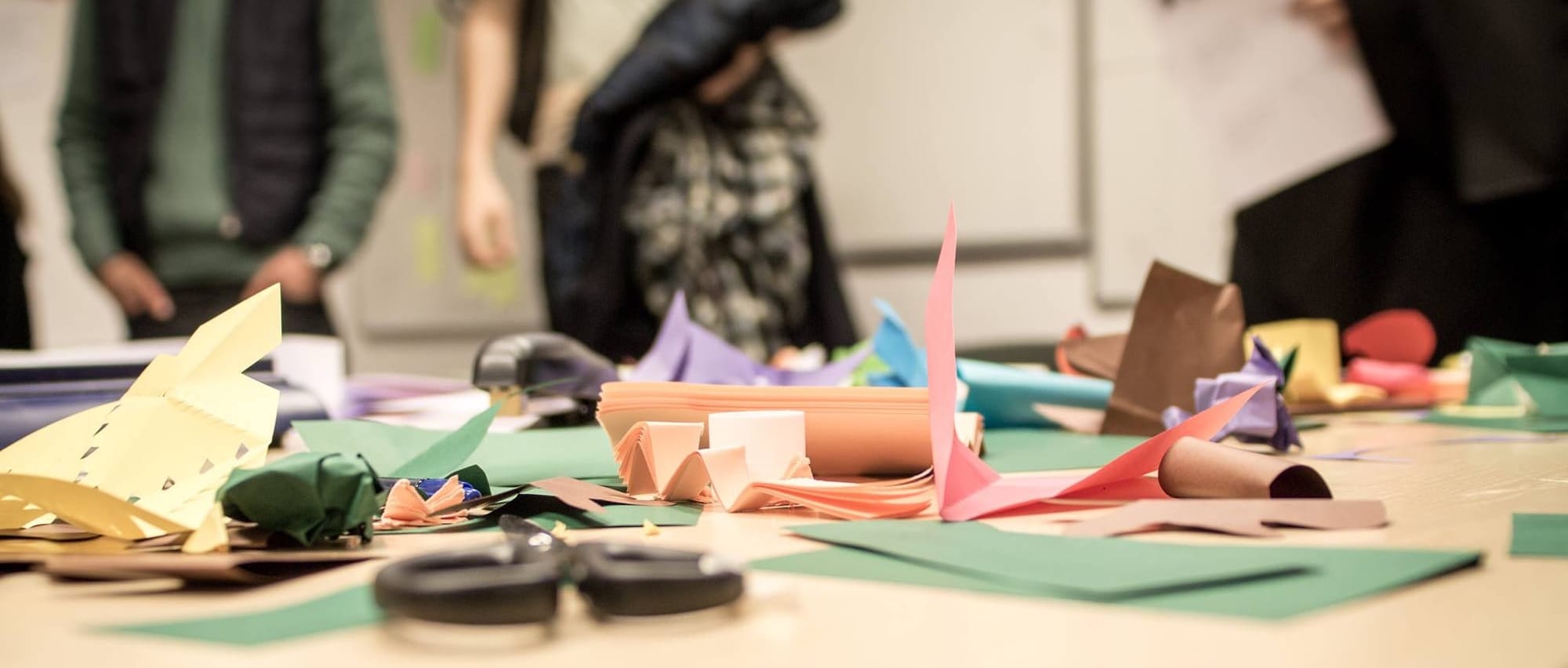Designing for meaningful human experiences, not vacuous simplicity.

Hi everyone, Kevin here.
I recently had a great conversation with Joel Marsh about the broad topic of UX design. We covered so much that we decided to break it down into smaller pieces (will release the full conversation later). Here are a few notes about that first part.
Joel Marsh is an experienced UX designer, Founder at Peekerton and author of UX for Beginners published by O’Reilly.
This conversation is part of a series of podcasts for Design & Critical Thinking, in which I aim to create shared & collective understanding around the topics of design, business, tech, society, complexity, and more. The episodes are held in English or French depending on the invitee’s preferences –subtitles available in the video format.
🌟 Subscribe on YouTube to be notified when new episodes are out!
UX Maturity: understanding the need for ‘appropriate friction’
In this first part of our conversation, Joel introduces himself and explains his concept of “Anti-UX”, or “Appropriate Friction”, which contradicts a common misconception about UX, that is “UX design is the act of removing friction for the users”. This is, indeed, an oversimplification.
Here’s Joel’s thread on the topic:
This confusion with a pseudo-Lean approach (?) of UX design, a so-called “removal of waste”, is unfortunately too common. Joel & I argue instead for the importance of context over vacuous “simplicity”. Redundancies and frictions play an important role in UX, as studies have demonstrated (here and here):
“We don’t want [spending $100] to be too fast & too easy. And we don’t want the deletion of anything that matters to the users to be too fast & too easy.”
Indeed, we can differentiate two important things:
- The experience itself.
- The memory of the experience.
Actual frictionless experiences will not necessarily be remembered as such. The relationship between our (humans) intents and the systems in which we evolve are learning experiences, and we learn more from “negative experiences” than “positive ones” if there is a space for recovery –not necessarily in the literal meaning.
How do you design for learning and failure? How do you design for (psychological) recovery?
Thanks for reading, watching, listening 😉













Discussion